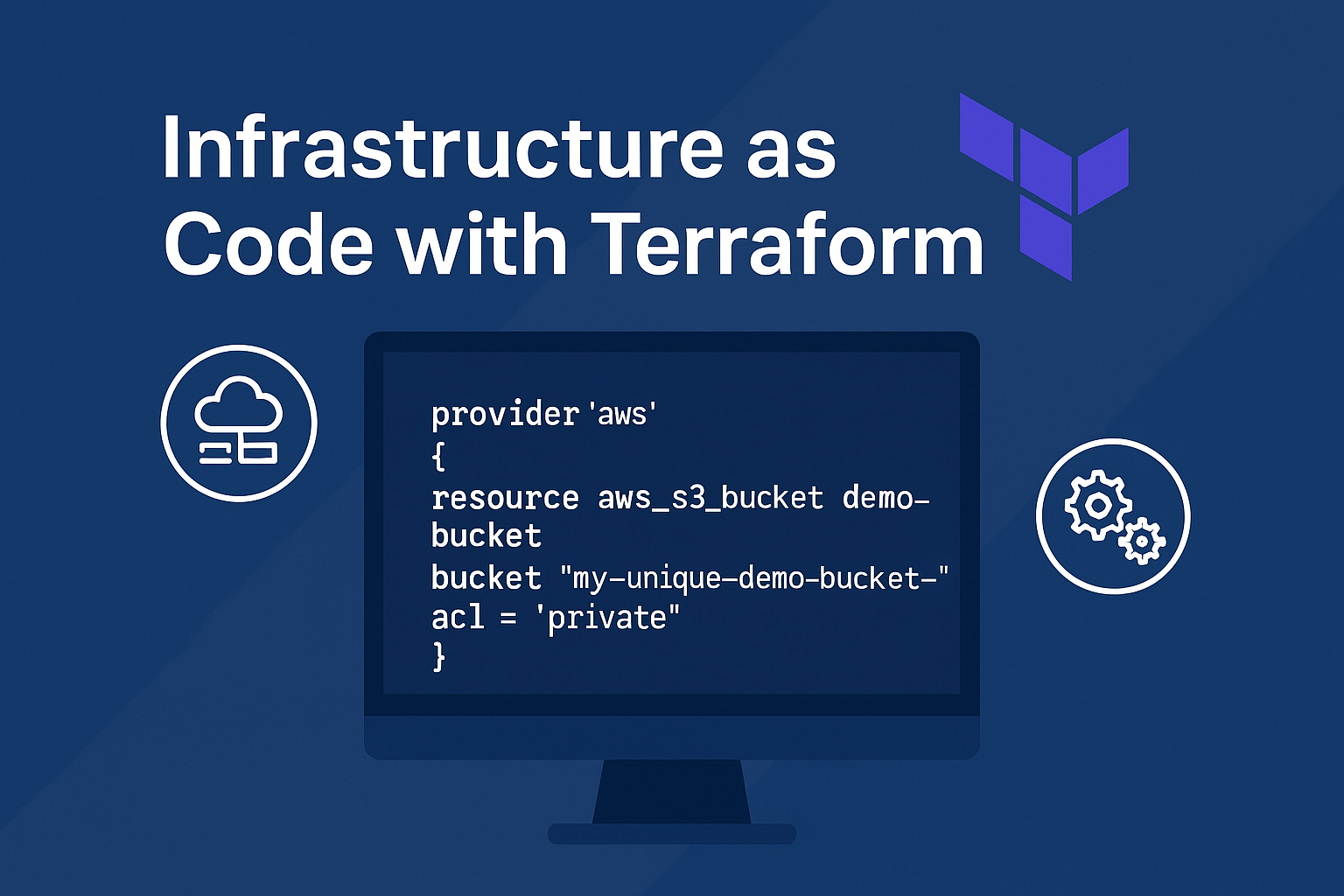In today’s cloud-first era, where speed, scalability, and reliability are non-negotiable, managing infrastructure manually is no longer sustainable. This is where Infrastructure as Code (IaC) comes in — and Terraform, developed by HashiCorp, has become the industry standard for defining and provisioning infrastructure through code.
This blog explores why IaC matters, what makes Terraform a leader in the space, and how you can start using it to manage your infrastructure more efficiently.
Why Infrastructure as Code (IaC) Matters
Before IaC, engineers configured cloud services manually via the console — a process that’s:
- Time-consuming
- Prone to human error
- Not scalable
- Difficult to replicate across environments
Infrastructure as Code solves this by enabling:
- Version control for infrastructure changes (like Git for infra)
- Automated deployments with CI/CD
- Reusability of configurations across staging, QA, and production
- Consistency across environments
- Auditable and traceable infra changes
Why Terraform?
Terraform is a cloud-agnostic, open-source IaC tool that allows you to define infrastructure using a simple, declarative language called HCL (HashiCorp Configuration Language).
Key Advantages of Terraform:
- Multi-Cloud Support: Works with AWS, Azure, GCP, Kubernetes, and more.
- Modular Design: Supports reusable components called “modules”.
- State Management: Tracks deployed resources using a local or remote state file.
- Plan Before Apply: Preview changes before applying them using
terraform plan. -
Community Ecosystem: Large set of open-source modules and provider plugins.
Getting Started with Terraform
Here’s a quick roadmap to start managing infrastructure using Terraform.
- Install Terraform
Download from the official site: https://www.terraform.io/downloads
brew install terraform # for macOS
choco install terraform # for Windows - Set Up Your First Project
Create a new directory:
mkdir terraform-demo && cd terraform-demo
Create a file named
main.tfprovider "aws" {
region = "us-east-1"
}
resource "aws_s3_bucket" "demo_bucket" {
bucket = "my-unique-demo-bucket-2025"
acl = "private"
} - Initialize and Apply
terraform init # Initialize provider plugins
terraform plan # Show execution plan
terraform apply # Provision infrastructure - Use State Files Wisely
Frameworks like Terraform keeps track of resources using a terraform.tfstate file. Use remote backends like S3 + DynamoDB (AWS) or Terraform Cloud to:Share state with teams
Enable locking
Ensure consistency
Best Practices for Production Use
- Use Modules
Keep code DRY and reusable.module "vpc" {
source = "terraform-aws-modules/vpc/aws"
name = "my-vpc"
cidr = "10.0.0.0/16"
} -
Separate Environments
-
Use separate directories or workspaces for
dev,staging, andprod
-
-
Remote State Management
-
Use S3 + DynamoDB (for AWS) to prevent state corruption in team settings.
-
-
CI/CD Integration
-
Run
terraform validate,plan, andapplyin pipelines using GitHub Actions, GitLab CI, or Jenkins.
-
- Version Lock Providers
- Prevent breaking changes due to provider updates.
terraform {
required_providers {
aws = {
source = "hashicorp/aws"
version = "~> 5.0"
}
}
}
- Prevent breaking changes due to provider updates.
Real-World Use Cases
- Spin up entire cloud environments in minutes.
- Automate VPCs, load balancers, EC2 instances, and S3 buckets
- Create EKS/GKE clusters as code.
- Audit infrastructure changes via Git
Final Thoughts
Terraform is a game-changer for modern DevOps workflows. If you’re building or managing cloud infrastructure, adopting Infrastructure as Code with Terraform is not just a trend — it’s a best practice. It brings reliability, repeatability, and automation to your stack, allowing your team to move faster without sacrificing control.

